'I'm biased, but I think it's the best thing in the Memorial'
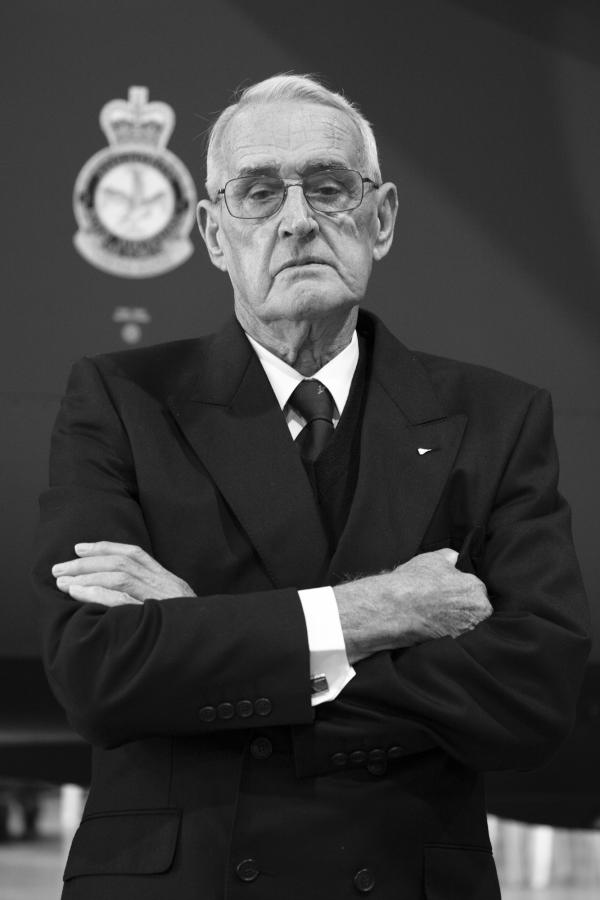
It was affectionately known as “the pig” for its ability to fly low and fast during bombing runs, but to pilot Geoffrey Talbot the F-111 was simply “magnificent”.
“It’s very difficult to explain to somebody what it’s like flying at 600 miles an hour, two or three hundred feet above the ground, in total darkness and not be able to see a darn thing,” the retired air commodore said.
“It’s pitch black, in the middle of the night, and you can totally control where you are going and still hit a pin for your target at 500 miles an hour.
“It’s difficult to explain what that’s like, and it’s the last one that could do it.”
The F-111 was an all-weather supersonic tactical attack aircraft capable of flying at two and half times the speed of sound at high altitude.
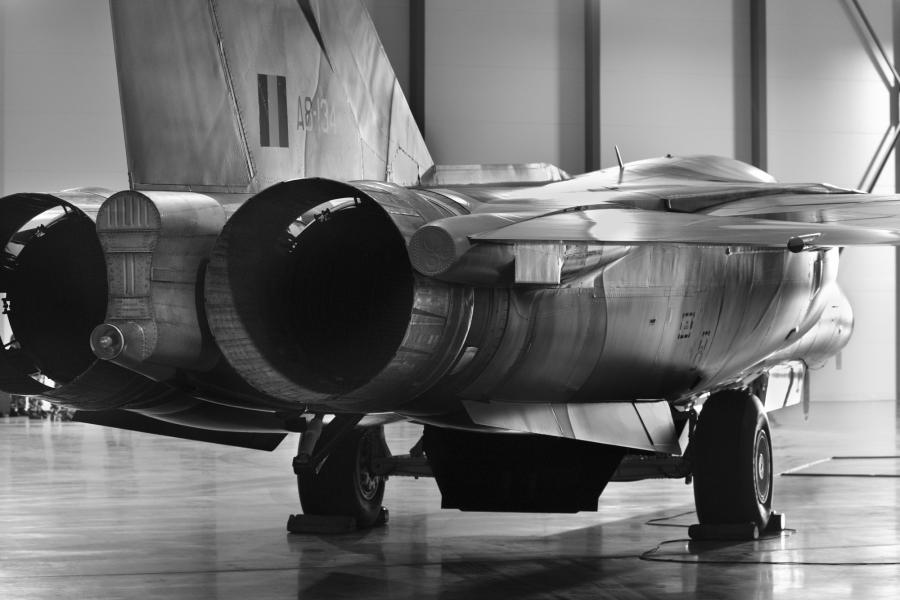
Today, it is considered a major piece of Australian aviation history, and an important reminder of the servicemen and servicewomen who worked on the aircraft for almost 40 years.
One of the aircraft Talbot flew, A8–134, is now part of the National Collection at the Australian War Memorial in Canberra.
It is the only remaining RF-111C that participated in missions over East Timor in 1999, and has the greatest operational provenance of the preserved Australian F-111 fleet which retired from service in 2010.
Talbot remembers it well. He was the commanding officer of No. 1 Squadron when the Royal Australian Air Force first took delivery of the F-111s in 1973.
“At that stage we only had Canberras and Phantoms on loan,” Talbot said.
“The F-111 came from General Dynamics at Fort Worth, Texas, and we had to get the aeroplanes from there to Queensland.
“For my first job as part of the F-111 program, I was situated on the west coast of the United States at Sacramento organising the delivery of the first 24 aeroplanes from the factory to Amberley in Australia. We flew them home in four batches of six, but it was a big task in those days because we didn’t really know how far we could fly them or how far they would go.
“Every time we got six of them together, we would get six crews from Australia and the United States, and fly them home from Sacramento, to Hawaii, to American Samoa, and to Amberley.
“We did it four times in that year, and it just so happens I was the first one to pick up this aeroplane, 134, and fly it out of Fort Worth to Sacramento.”
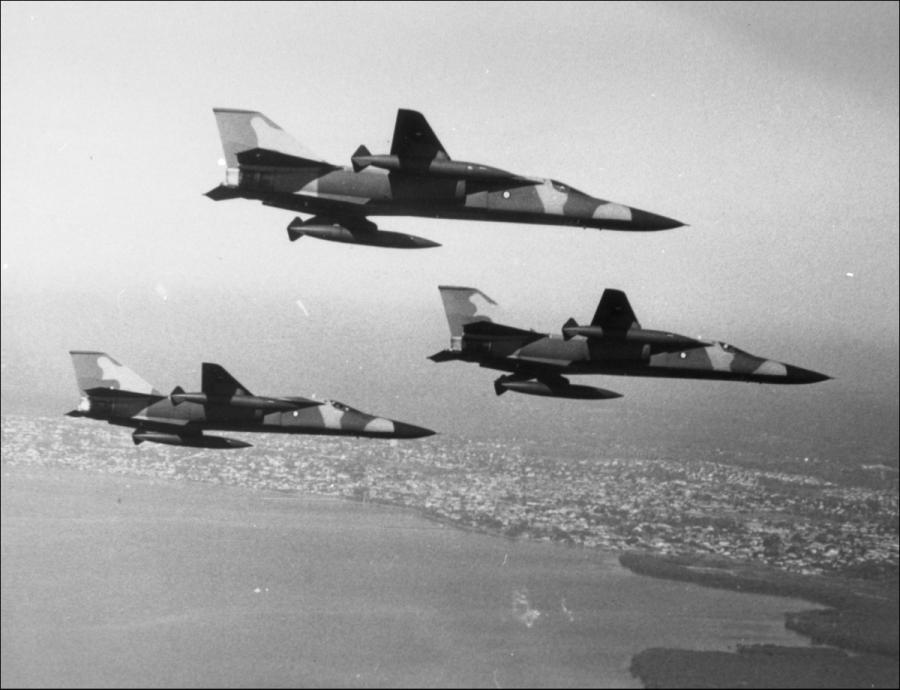
The arrival of the first A8 F-111s at Amberley in 1973. Photo: Courtesy Defence
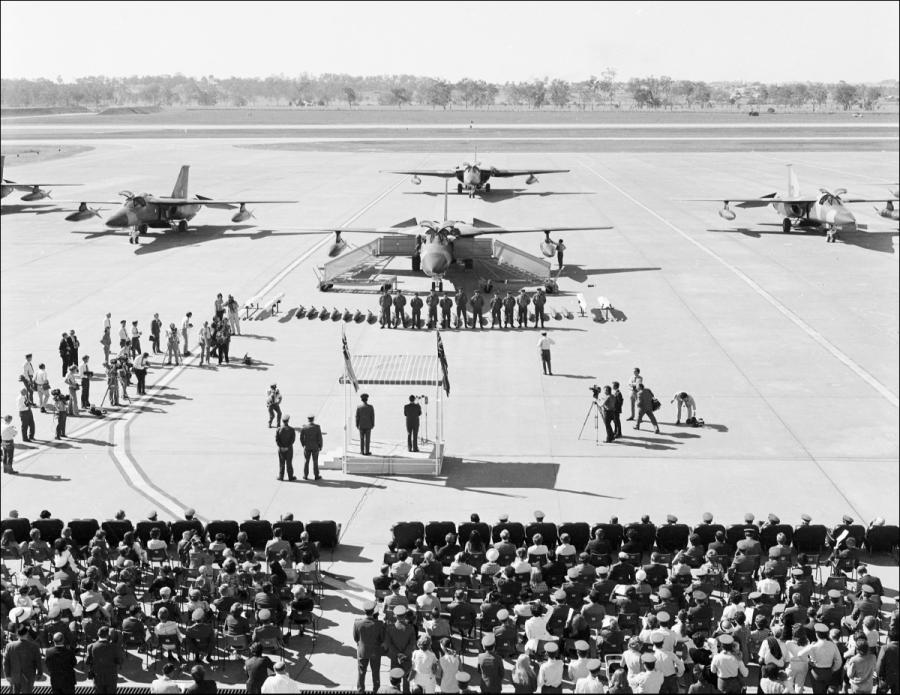
The arrival of the first batch of A8 F-111s from Fort Worth, Texas, in 1973.
Photo: Courtesy Defence
I’m biased, but I think it’s the best thing in the Memorial. Ever since I was a little boy, my parents brought me to the Memorial, and I was fascinated with the guns and bombs and tanks and submarines – all of those things – and this sort of caps it out; I’d just like to see it out at the top of Anzac Parade.
The F-111 was the world’s first production variable-geometry wing aircraft with a bomb load equal to that of four McDonnell Douglas F-4 Phantoms. The aircraft type flew with the United States Air Force in Vietnam, conducted air strikes against Libya in 1986, and participated in the Gulf War.
In Australia, the aircraft proved a much loved and respected part of the RAAF.
“At Amberley, they settled down into the two squadrons,” Talbot said. “No. 6 Squadron was the conversion squadron – it was teaching new pilots and navigators to fly the aeroplane – and No. 1 Squadron had the responsibility of developing what we call the initial operational capability – the IOCs – and that was a pretty big task because the aeroplanes can do a fantastic number of things.
“You can fly day or night in all weather, conduct maritime strikes, land strikes, reconnaissance, and all of those things; and the crews had to be taught all of those.
“It took a fair while to get everybody up to speed, or what we call ‘combat ready’ nowadays, but it was very enjoyable. Like modern aeroplanes, they were very easy to fly, but you had to understand all the systems, which were terribly complicated.”
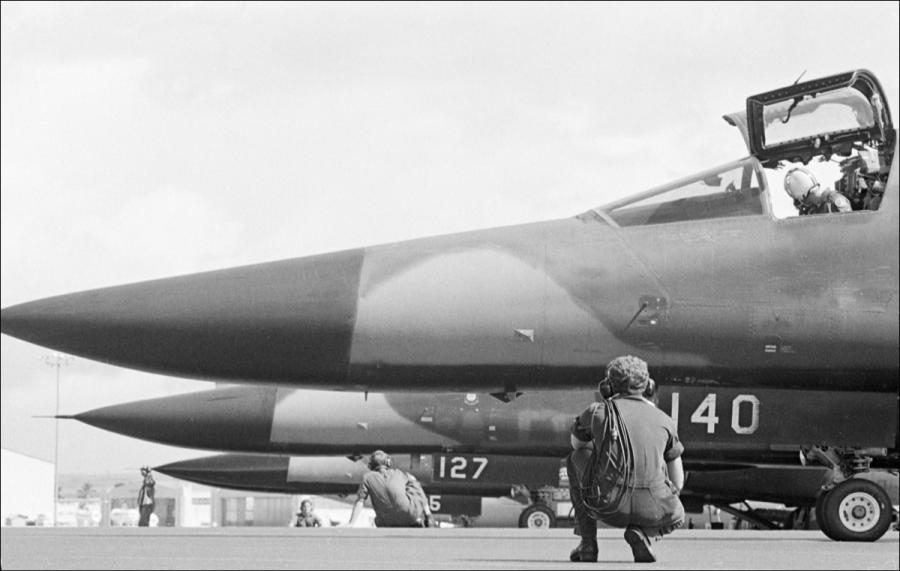
F-111s during an exercise at Bucholz Army Airfield in Hawaii in 1982.
Photo: Courtesy Defence
For almost 40 years, the RAAF’s F-111 fleet filled the roles of strategic strike, aerial-reconnaissance, and electronic warfare, providing the nation with outstanding long range strike and reconnaissance capability which helped to ensure regional peace and stability.
“I’ll never fly one again that can fly low, fast and blind like it,” Talbot said. “You don’t believe it can to start, but very quickly you get used to doing it. In fact, I feel safer in the F-111 than in any other aeroplane I’ve ever flown because you can stay in the air for eight hours.
“In most other aeroplanes, you’re worrying about what the weather will be like at base when you get back. If you can’t land there, you’ve got to have enough fuel to land somewhere else, but this aircraft has got enough fuel in it to go anywhere else in Australia.
“It’s also got a lot of safety features in it; if any one of the systems that keeps you down low, fast and blind fails, it automatically pulls up and you get away from the ground very quickly.
“And that’s what I mean about the capability of the aircraft; it’s got long legs that can go long distances around the world and it can carry a massive armament load of bombs and rockets and all of those things.”

The aircraft, A8–134 is currently housed in the Memorial’s new storage facility at the Treloar Technology Centre in Mitchell and will be displayed in the Memorial’s new gallery spaces.
For Talbot, seeing the aircraft again brought back a lot of memories. He first joined the RAAF as an engineering apprentice in 1948.
“I’ve always been interested in flying and I always wanted to fly,” he said. “After the Second World War they decided they needed people to work on the aeroplanes, so I became an apprentice at 16. It was a five-year apprenticeship, and you were locked in to do that, but after that I did pilot training and [served in] five or six different fighter squadrons.”
He became a test pilot and was involved in aircraft research and development work when he organised the delivery of the F-111s in the 1970s.
“That was my last flying job, the time in this, and I never flew again,” he said.
“I’m biased, but I think it’s the best thing in the Memorial. Ever since I was a little boy, my parents brought me to the Memorial, and I was fascinated with the guns and bombs and tanks and submarines – all of those things – and this sort of caps it out; I’d just like to see it out at the top of Anzac Parade.
“It’s a capability we had then that we don’t have now and I don’t think we will ever have again.”